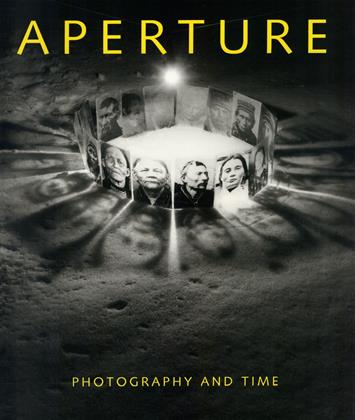Breathless
The concept that photography was a means for nature to leave her own imprint through the action of sunlight accounted for much of the magical allure of the medium at its inception. The photogenic drawings, or photograms, of plants produced by Talbot from the 1830s aligned conceptually with the phrases that he wrote in his scientific notebooks: "Nature magnified by Herself" or "Look through Nature to Nature's God." These were musings that explored the notion of a universal divine order through nature. Heather Ackroyd and Daniel Harvey have resurrected some of this natural magic over recent years not through the use of paper and chemicals but by returning, literally, to the roots of photographic image making.
Their unique images are made from grass grown from seedone of nature's most abundant raw materials—that records as it grows the shadings of a projected negative. The subtle yellows, greens, and tonal variations are entirely produced by the pigment chlorophyll that gives life to plants via the natural action of photosynthesis.
Pictures such as these flicker with life while their transient nature makes us acutely aware of passing time. In Middlemarch, her finely wrought examination of the structures of human life, George Elliot wrote: "If we had a keen vision and feeling of all ordinary human life, it would be like hearing the grass grow and the squirrel's heart beat." Ackroyd and Harvey's pictures create substance from this vision in tapestries, intricately woven from blades of grass, that embody a natural order and hint at the carefully balanced laws of the cycle of life.
—Martin Barnes
As inevitably as weathering, the process of inhabiting a space leaves the marks of time all over it, and so constitutes a declension from the architect’s ideal. A house that welcomes our stuff, our furniture and pictures, our keepsakes... is one that we have been invited in some measure to help create or finish; ultimately such a house will tell a story about us, individuals with a history.
—Michael Pollan, from A Place of My Own
No one has lived in the past and no one will live in the future.
The present is the form of all life, and there are no means by which this can be avoided.
—Jean-Luc Godard, from Alphaville
The millennium is in many ways an artificial event, and yet it has had many real consequences—causing the creation of new architectural, historical, and even political monuments. Like our predecessors one thousand years ago, we have—in spite of ourselves—approached the millennium with bated breath. The terror of Apocalypse 1000 was reprised by the stress of Y2K. Stress had become a keyword of our fin de siècle. This is the subject of a series of photographs made by Bettina von Zwehl. Her sitters (actually carefully aranged in horizontal positions) have held their breath for ninety seconds, making us ponder breath as the stuff of life, of poetic and musical measure, and as the opposite of that other measure—death. —M H-B
One must always maintain one’s connection to the past and yet ceaselessly pull away from it To remain in touch with the past requires a love of memory To remain in touch with the past requires a constant imaginative effort.
-Gaston Bachelard, from Fragments of a Poetics of Fire
 View Full Issue
View Full Issue
More From This Issue
-

Stonehenge: Instruments Of Timelessness
Winter 2000 By Paul Caponigro -

How Did Muybridge Do It?
Winter 2000 By Phillip Prodger -

Light As A Recording Agent Of The Past
Winter 2000 By W. Jerome Harrison -

Flashback: The Photography Of Dr. Harold Eugene Edgerton
Winter 2000 By Martin Barnes -

The Llewelyn Album
Winter 2000 By M H-B -
 People And Ideas
People And IdeasMariko Mori, Empty Dream Brooklyn Museum Of Art: April 8-August 15, 1999
Winter 2000 By Lesley A. Martin



















